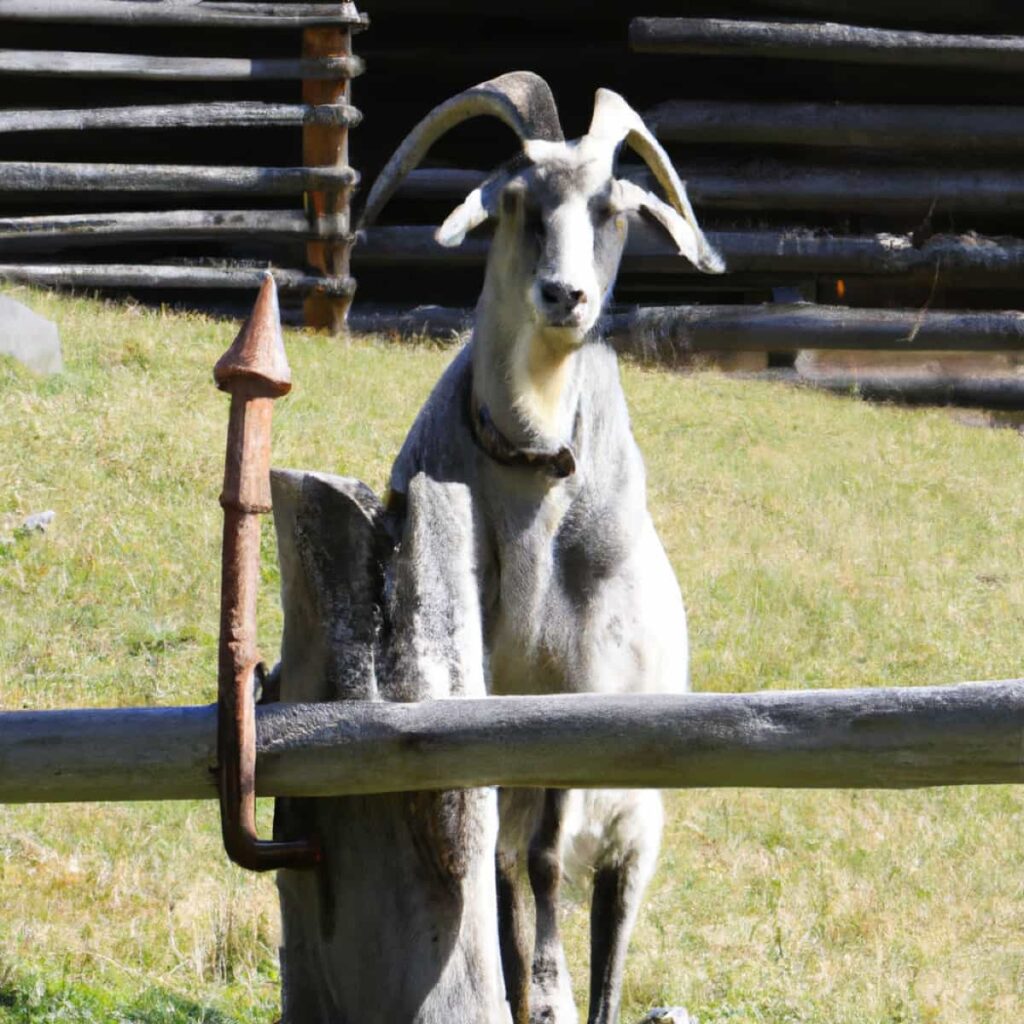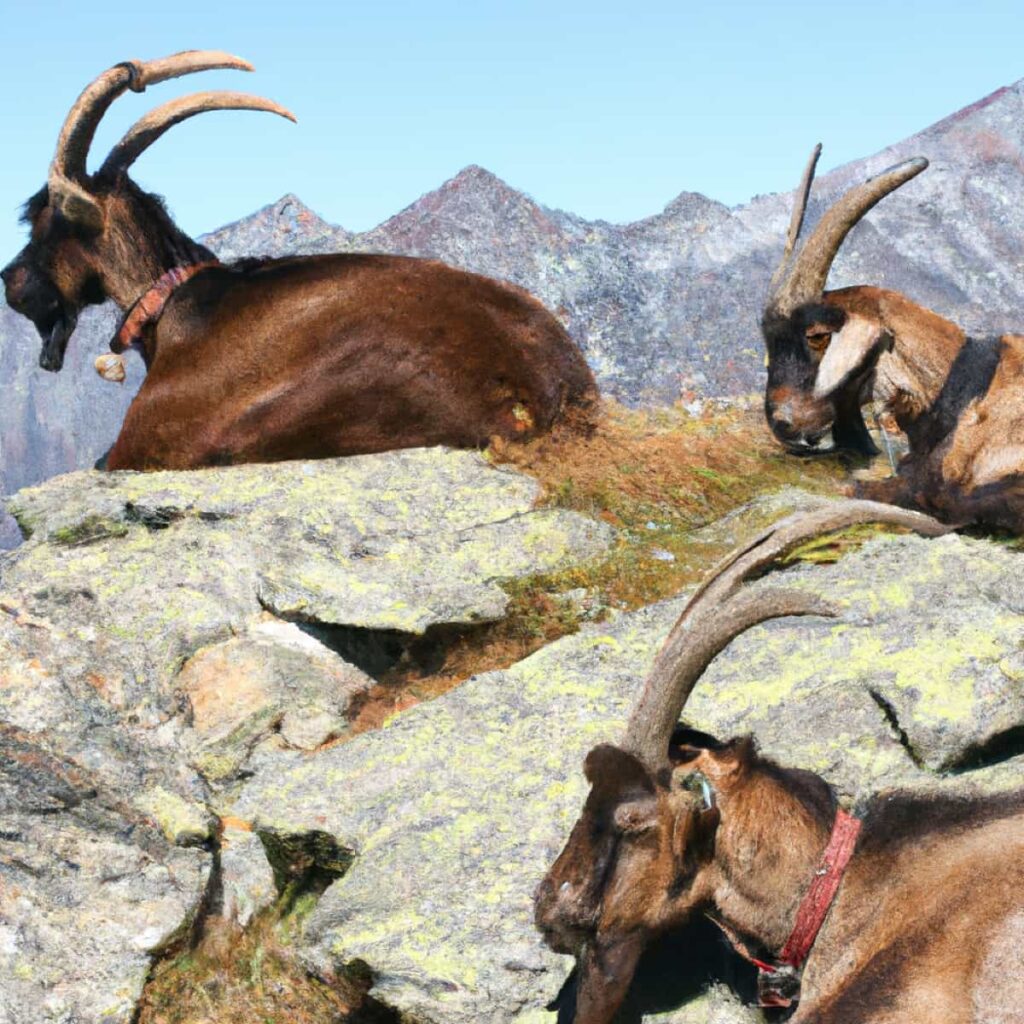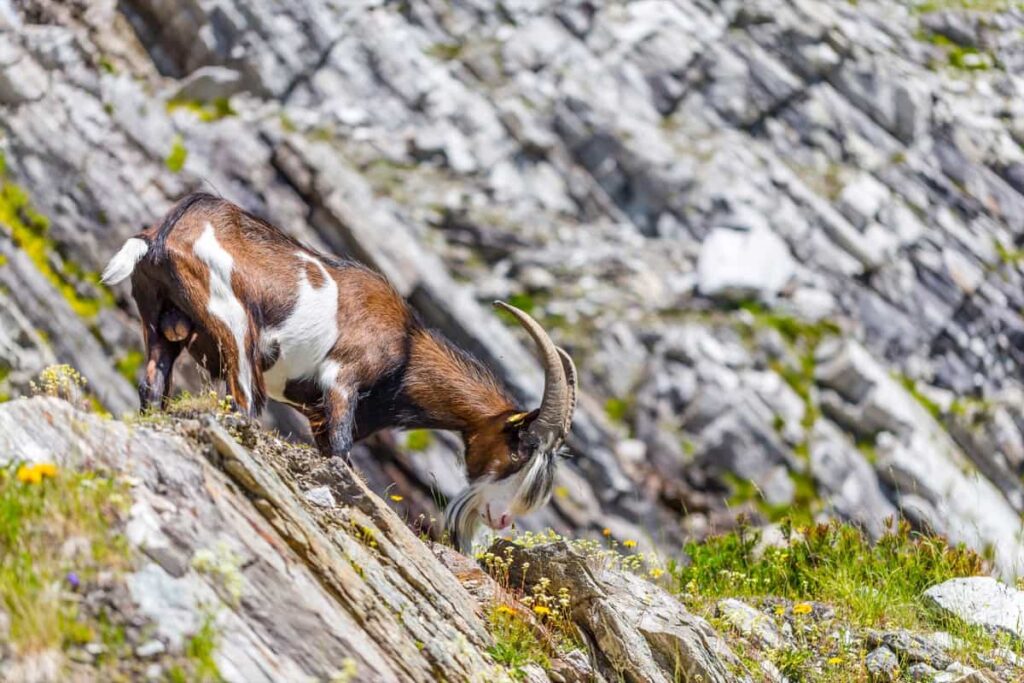This guide provides simple, easy-to-understand information on raising and caring for Alpine goats. From selecting the right breed and setting up your farm to feeding, breeding, and health management, this guide covers all aspects of Alpine goat farming. With practical tips, expert advice, and helpful resources, you’ll have everything you need to start your successful Alpine goat farming journey.

Raising Alpine Goats
What is Alpine Goat Farming?
Alpine goat farming is a popular form of dairy farming in Europe and America. This goat breed originated in the French Alps and is known for its high milk production. Alpine goats are versatile and suitable for both small-scale and commercial farming. These medium to large-sized goats come in various colors ranging from white or gray to brown and black and have horns, a straight profile, and erect ears.
Alpine are heavy milkers; their milk makes butter, cheese, soap, ice cream, and other dairy products. Alpine goats are ideal for commercial milk production and also for homestead milk production. A lactating doe can produce an average of 4 liters of milk daily.
History & Origin of Alpine Goat
- The Alpine goat is the French Alpine or Alpine Dairy goat.
- The breed was originally developed in the French Alps.
- Alpine goats were imported to the United States in the early 1900s and have become one of America’s most popular dairy goat breeds.
- The first French Alpine goat herdbook was established in France in 1905.
- Alpine goats were selectively bred for their milk production and hardiness in mountainous regions.
- They were also used for their meat and as pack animals.
- This breed was officially recognized by the American Dairy Goat Association in 1936.
- Today, Alpine goats are raised worldwide and are known for their high milk production and adaptability to various climates.
Characteristics of Alpine Goat
- Size: Alpine goats are medium to large-sized breed, with males reaching over 81 cm (32 in) tall at the withers and females reaching over 76 cm (30 in) tall.
- Coat: Their hair is short to medium in length and comes in all colors and combinations of colors.
- Ears: Alpine goats have erect ears, giving them an “alertly graceful” appearance.
- Adaptability: Alpine goats are known for their hardy nature and ability to adapt to any climate.
- Weight: Males weigh no less than 77 kg (170 lbs), and females weigh no less than 61 kg (135 lbs).
- Sexual maturation: Buck kids mature four to five months after birth, while doe kids mature five to six months after birth. Doe kids should only be bred once they are at least 75-80 lbs.
- Gestation: The gestation period for Alpine goats is 145-155 days, with an average of 150 days. Twins are the most common but can have singles or quintuplets.
Types of Alpine Goats
- French Alpine: French Alpine goats are known for their excellent milk production and are considered one of the best dairy breeds. They have a sturdy build, with a short coat of hair in different colors like black, brown, or gray. They have erect ears and are known for their friendly and docile temperament.
- American Alpine: American Alpine goats are a popular breed known for their high milk production in the United States. They are medium to large-sized goats with straight or slightly dished faces. They can come in various coat colors, including black, brown, or white, and often have distinctive markings, such as a black dorsal stripe and white facial stripes.
- British Alpine: British Alpine goats are smaller than French and American Alpine goats but still good milk producers. They have compact bodies with a short coat that can be black, brown, or gray. They have upright ears and are known for their alert and curious nature.
In case you missed it: Goat Breeding and Genetics for Improved Productivity and Disease Resistance

How to Start Alpine Goat Farming
Starting Alpine goat farming involves choosing healthy and disease-free goats and providing proper shelter, clean water, and nutritious food. Regular health checks, vaccinations, and deworming are necessary. Marketing channels and business plans should be in place before starting the venture.
Benefits of Alpine Goat Farming
- Low space requirement: Compared to other breeds and animals, Alpine goats require very little space and can adapt to different climatic conditions and environments, reducing the need for housing.
- Versatility in breeds: There are many different breeds of goats, each with its unique advantages. For instance, Boer, Black, Bengal, and Sirohi are known for their meat quality. At the same time, Saanen, Toggenburg, Anglo Nubian, and Jamunapari are bred for high milk, and Angora and Cashmere goats are ideal for fiber or mohair production.
- Multiple purposes: Goats are usually raised for different purposes, including meat, milk, fiber, and as pets. Goat manure is also an excellent source of organic fertilizer.
- Low food requirement: Due to their smaller size, goats usually need less food, and some breeds can survive with very little.
- High reproductive rate: Alpine goats have a high reproductive rate, giving birth to 1 to 3 kids at a time, with twinning being common.
Milk Production by Alpine Goat
- Alpine goats are known for their rich dairy products and are popular in the dairy industry for their high-quality milk output and long lactation.
- Alpine goat milk has a relatively low-fat content, averaging 3.4% fat, but is higher in sugars than cow’s milk and has 2.3g of protein per 250ml.
- Alpine goats and Saanen and Toggenburg goats are among the top milk producers but have a lower fat content than the other two types.
- The optimal weight for Alpine goats to produce optimal milk production is at least 130 pounds, with a peak period for milk production occurring after four to six weeks of parturition.
- Four requirements for optimal dairy production in Alpine goats are adequate ventilation, dry beds, uncontaminated feeder and water supply, and minimal labor and disturbance.
- Alpine milk must be filtered and chilled immediately upon separation from the lactating doe for human consumption, with the ideal temperature for milk storage being 4.4°C (39.9°F).
- Refrigerated Alpine milk has a shelf life of about three to four weeks, while freezing it increases its shelf life by about four to five weeks.
Housing in Alpine Goat Farming
- Alpine goats are medium to large-sized animals and need adequate housing space.
- Provide 12 square feet of housing space per goat and 20-30 square feet of playing space if using a stall-fed farming system.
- A raised house is recommended for Alpine goat farming, but a deep litter system can also be used if kept dry and clean.
- Ensure good ventilation and the flow of fresh air and light for the goats.
- Make the house comfortable for the goats and keep all necessary equipment inside.
- Clean the house regularly and maintain a dry environment.
Feed and Nutrition in Alpine Goat Farming
- Alpine goats require high-quality feeds for optimal growth and milk production in Alpine goat farming.
- A balanced diet that includes greens and grains is essential for the health and productivity of Alpine goats.
- Green feeds are essential for Alpine goats as they are a dairy goat breed and require more greens for milk production.
- Providing fresh, leafy greens such as alfalfa, clover, and grasses is crucial for meeting the nutritional needs of Alpine goats.
- Moderate grains such as corn, oats, and barley can provide energy and protein to support the goats’ growth and milk production.
- Access to fresh water is essential for Alpine goats’ overall health and digestion.
- Proper supplementation with minerals and vitamins, such as calcium, phosphorus, and vitamin D, is crucial for maintaining strong bones and healthy teeth in Alpine goats.
In case you missed it: Innovative Housing and Shelter Designs for Profitable Goat Farming

Tips for Breeding and Reproduction in Alpine Goat Farming
- Choose healthy and genetically superior breeding stock.
- Maintain proper nutrition and hygiene for breeding goats.
- Keep accurate breeding records and monitor breeding performance.
- Plan and schedule breeding based on seasonal factors and goat age.
- Use appropriate breeding methods such as natural breeding or artificial insemination.
- Monitor pregnancy and provide proper care for pregnant goats.
- Ensure proper kidding management and care for newborn kids.
- Implement a culling program to remove unproductive goats from the breeding herd.
- Regularly assess and improve breeding practices to maintain herd health and productivity.
Conclusion
Raising Alpine goats can be a rewarding venture for successful farming. With proper care, management, and knowledge of their specific needs, Alpine goats can thrive and provide milk, meat, and other benefits. Consider this information guide a helpful resource to start your journey toward successful Alpine goat farming.
- Types of Grass Growing for Goat Farm
- How to Train Goats for Milking: A Beginners Guide
- Goat Milking Practices and Equipment: A Beginner’s Guide
- Goat Farming for Fiber: Producing Mohair and Cashmere
- Maximizing Goat Milk Production: Tips for Dairy Goat Farmers
- Goat Farming as a Family Business: Strategies for Success
- Profitable Kenya Goat Breeds for Commercial Dairy and Meat Business
- Unlock the Secrets of Oberhasli Goat: Discover Raising and Management Practices
- Ultimate Guide to Myotonic Goats: Explore Profile to Raising
I am from chennai india. I am looking seriously for purchase alpine goats
Please replay further.
I am from rajasthan. I wants purchase Alpine goat.
I am from Andra Pradesh i want to buy Alpine goat please contact me any updates about this goat’s
Hi I’m from albania I’m looking to do a small farm I’m looking to buy 50 alphin goats
Am in kenya am interested with the alpine goat how can I get it
I am from Zimbabwe, can you supply please
Hi there , I’m interested in buying some alpine goats
Your advice in this regard would be appreciated